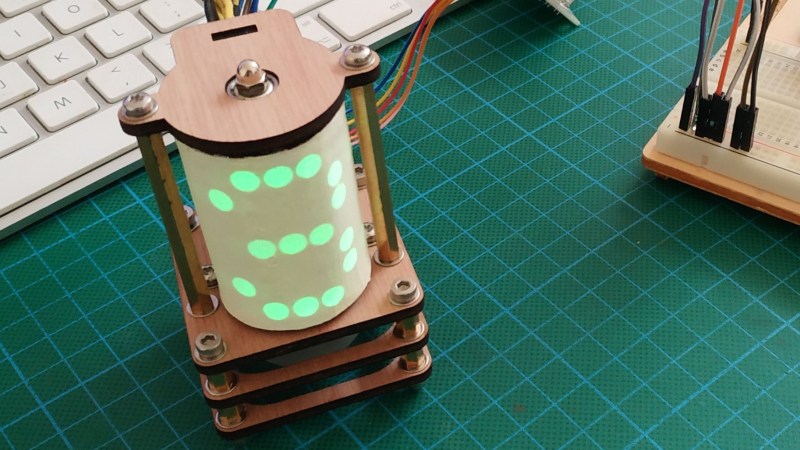For as many projects as we see using Nixie tubes in new and unusual ways, there’s a smaller but often very interesting cohort of displays that fit into the “Nixie-like” category. These are projects where something other than the discharge of noble gasses is being used to form characters. This scrolling phosphorescent single-character display is one such project, and we think it looks fabulous.
Following the *ixie naming convention characteristic of these builds, [StephenDeVos] dubbed this the “Glixie.” This is on par with the size of a [Dalibor Farny] handmade Nixie, but not so big to be unwieldy. The display modality is glow-in-the-dark film that rotates past a vertical string of UV LEDs, which light up in turn as the cylinder rotates, building up the dot-matrix character column by column. There’s some fading of the first column by the time the whole character is built up, but not enough to be objectionable. We like the whole build, with laser-cut wood and the brass and steel hardware. Check it out in the video below.
If this phosphorescent display strategy seems familiar, it’s because we’ve seen it before. Remember this persistence of phosphorescence display? Or perhaps this time-writing robot clock? It’s not a new idea, but [Stephen]’s execution can’t be beat.
















This looks brilliant and uses my favourite cheap stepper.
I’ve just had a tangential idea: could one design two concentric barrels: the outer with holes and the inner with black dots. So that when offset slightly, the holes and dots would mesh up and form dot-matrix style characters? Kind of like moire but super-low res.
That is absolutely brilliant!
Now do a version with an LCD display that only displays one vertical line of graphics, and you can do fancy graphics too :)
I dunno. Part of me likes it because it is so absurd and part of me goes baah. It would be interesting in a clock if you put 1:1 gears in all of the displays from the left. I suspect the glow would be stable for a second, so you would need to refresh the minute’s digits 60 times in a minute, and the hour digits 3600 times in an hour. It would not be hard to figure out how to fire one bunch of dots going forward and next going backwards so one motor could run the whole thing.
Nice. 28BYJ favorite so 555 bonus points. Im assuming use green tint phosphor glow paint or plastic strip?